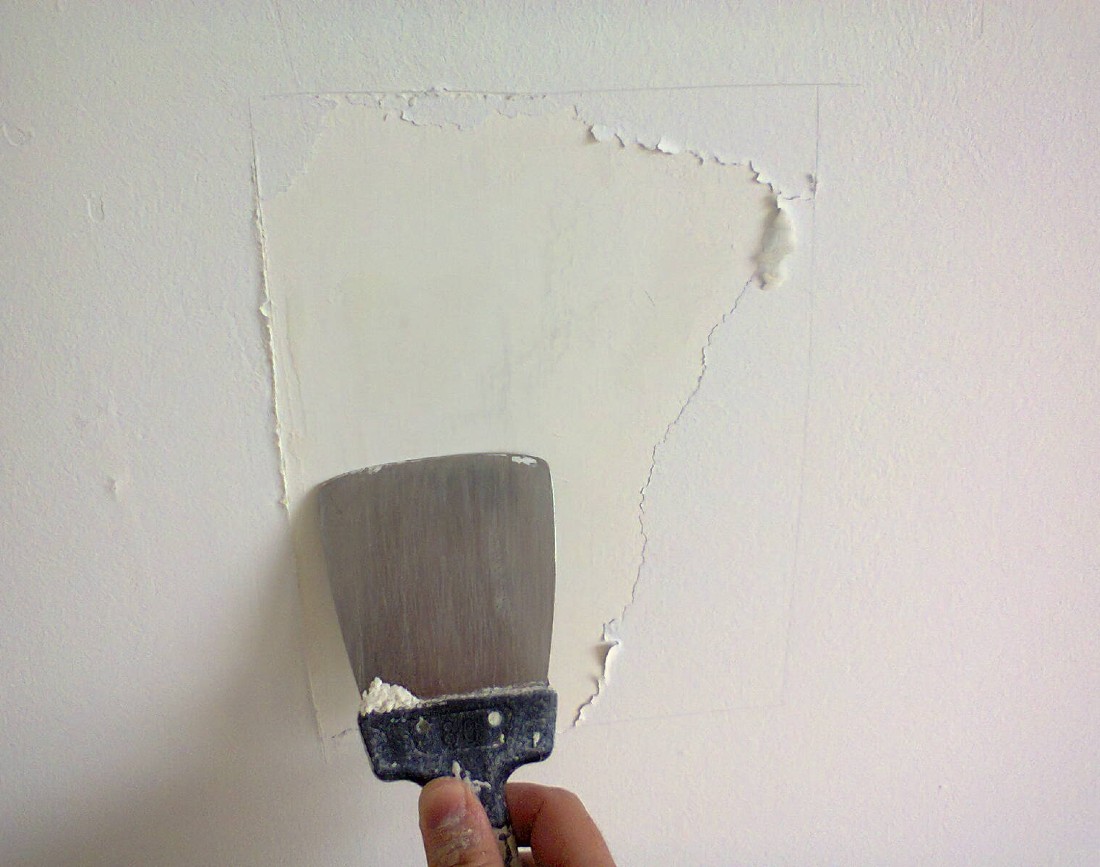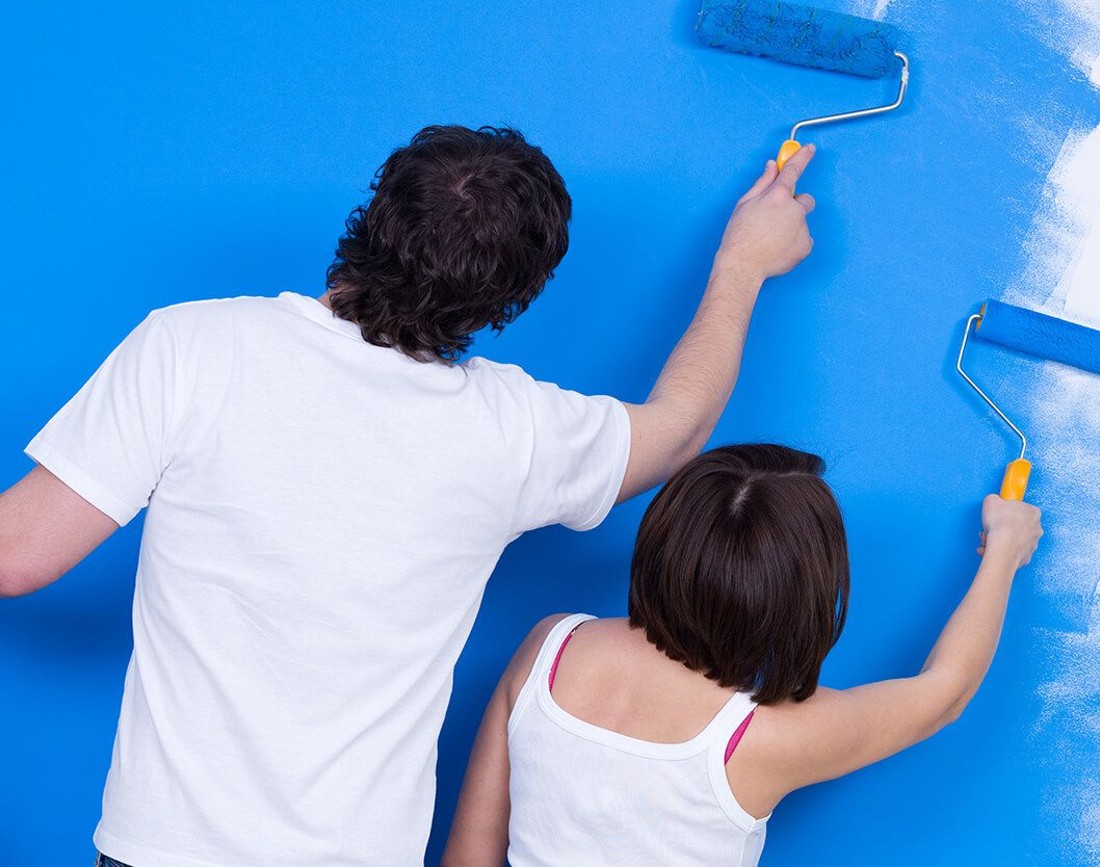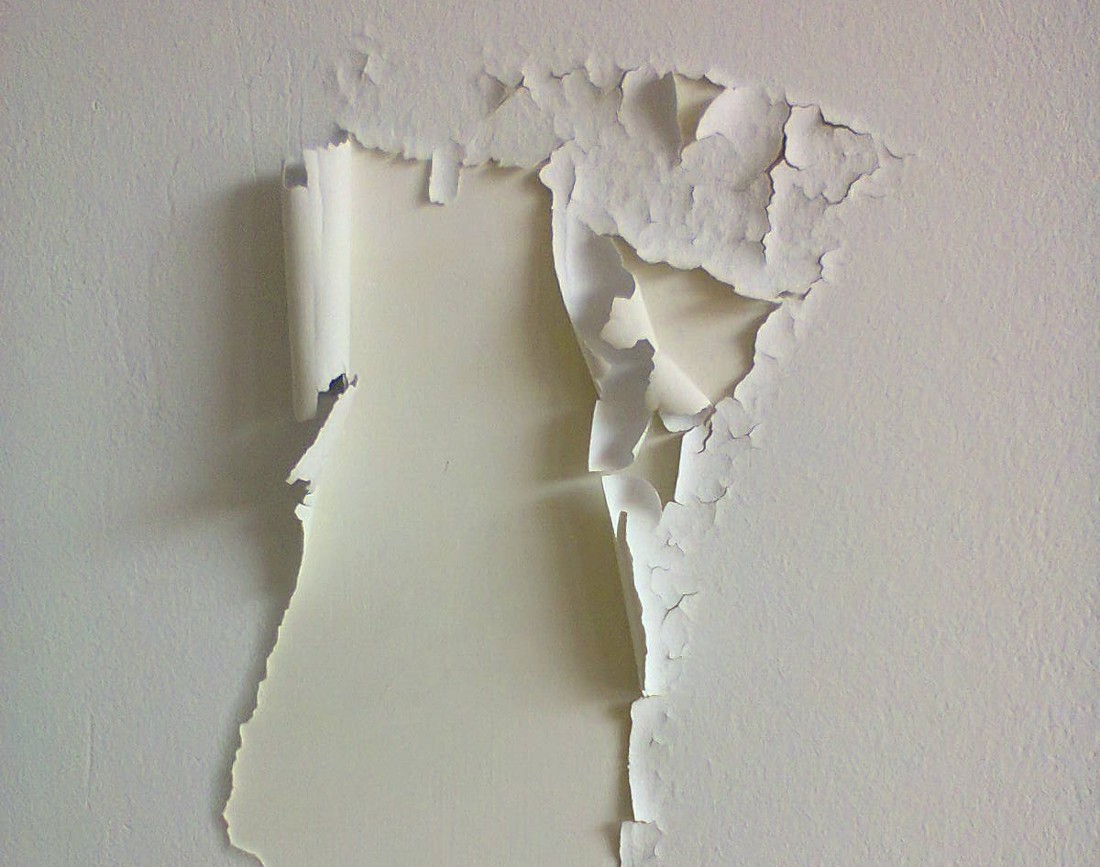How to Fix Peeling Emulsion Paint | How to Prevent Paint Peeling on Walls
publicat in: General // Publicata pe 31.05.2023
We have often said that when you start renovating your home, you should work with experts who know how to handle such a project and who deliver the expected results. Otherwise, you might run into very unpleasant situations.
Do you want to find out about one of the most common problems of Romanian homes? Washable paint is peeling and all the hard work has gone to waste.
We're here to tell you about the best solutions you can apply, so that you can turn your luck for the better.
Why is My Emulsion Paint Peeling: Causes
There are many reasons that cause peeling of emulsion paint, and these include walls that were not properly prepared, applying paint on a substrate that is not fully dried, moisture penetration through exterior walls and so on. Here are some.

This is an emulsion paint flaking, photo source: misiuneacasa.ro
Cause #1 for swollen wall: applying emulsion paint to a wall that is not properly prepared
Typically, the emulsion peels because the primer has not been applied, and the dust layer causes the paint to peel off the backing. Another cause in the same category is that workers have not washed the old paint thoroughly and have run over it. In this case, the old layer of paint swells and this peeling phenomenon happens.
Another situation that answers your question is represented by paint layers that have not dried completely. If you apply a coat before allowing the previous coat to cure, you get this annoying result.
Cause #2: failure to observe the temperature conditions when applying emulsion paint
In here, we mean application temperature that exceeds the minimum or maximum recommended temperatures, high humidity ambience upon applying, exposure to high humidity after not being fully cured, application of paints in windy weather and many others.
Cause #3 for stained wall: improper paint preparation
This is about applying an undiluted, (too thick), or overdiluted (too thin), coat of paint.

Stick to the essential steps, to make sure your emulsion paint is applied properly, photo source: pinterest.com
Peeling emulsion paint: How to fix it?
There are several ways to repair a dented wall and it depends very much on the situation. If the air bubbles in the paint layer are only on the surface, it's pretty simple.
All you have to do to repair the reason for peeling paint is to scrape away the bubbles with a spackle, wire brush or if necessary, the stripping process.
See what suitable materials you can find in our range.
The surface that will be painted is sanded, dusted, repaired and prepared accordingly, depending on the type of backing and the use of the paint. Finally, the paint is applied according to the manufacturer's recommendations.
If the underlying layer is damaged in depth, the cause of the wetting must be removed. Remove the affected layer and repair it.
How long does the wash dry?
In the process of applying the wash you have to keep in mind some important details. At low temperatures, spreading the wash will be very difficult and the drying process will take a long time, during which time dust will settle. This is one of the reasons why interior design and construction is carried out in spring and autumn.
The temperature should not be lower than five degrees Celsius and will not exceed 35 degrees. If you want to apply the paint outside, you can wait until the time of day when the facade is not exposed to direct sunlight.
If you don't want your vanilla to peel, avoid painting exterior walls on rainy days, as there is a high percentage of humidity that affects it.

If you avoid the situations presented below, you should not have any problems with paint flaking, photo source: misiuneacasa.ro
How to apply emulsion paint?
In terms of applying the emulsion paint, the first surface to apply it to is the ceiling, then continue with the walls. The walls are painted last. It is important to cover a wall without a break to avoid differences in shade. The expert advice for applying emulsion paint is to apply it first to the unpainted areas, then back to the painted area. It is recommended to apply it first on the edges, before applying it over the walls. Start with the edges between the walls, then continue with the outline of windows and doors etc.
Before applying the second coat, make sure the first coat is allowed to dry as recommended by the manufacturer. Usually, the time the emulsion paint dries is between two and six hours at a temperature of around 20 degrees Celsius. The second coat of wash is prepared according to the manufacturer's instructions.
How to prevent peeling of emulsion paint?
To make sure you don't experience the problems I've outlined above, you should avoid the origins. Do not apply the emulsion paint on a wall that has not been properly prepared, do not apply the paint on a substrate that is not properly dried, do not allow moisture to penetrate through exterior walls.
Also, if you respect the weather or temperature conditions, you won't run into such problems. Prepare the paint properly and make sure you apply it in the right coat, not too thick, but not too thin. Respect the application time of the coats and take into account the natural ageing of the paint caused by temperature variations and the freeze-thaw cycle. These affect the elasticity of the paint film due to the expansion and contraction that takes place.
In the home improvement process, you need to consider which products you choose and who you go with on this home improvement journey. Choose a team that will help you in an exemplary way in the home improvement process and go on the website and order the right products from our range.